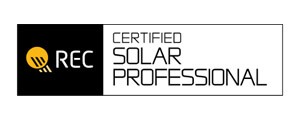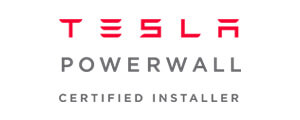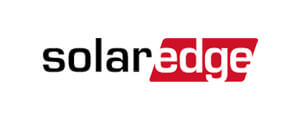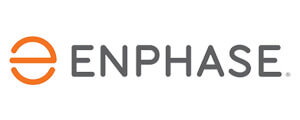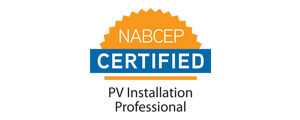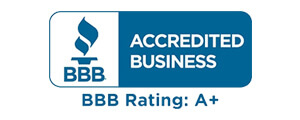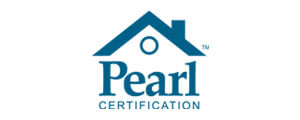If you have questions that are not listed here, do feel free to reach out to us on GoSolar@GreenBrilliance.com
Solar basics
What are PV panels? How do they generate clean energy?
Photovoltaic (PV) panels are one of the most efficient ways to capture the sun’s energy. The technology, based on the photoelectric effect described by French physicist Edmund Becquerel in 1839, uses photons emitted by the sun to create electricity, which lights up our homes and powers electric appliances.
Here is how they work:
- A beam of UV light, composed of photons (quantized packets of energy), strikes one part of a pair of negatively charged metal plates.
- Electrons are discharged from the negatively charged plate.
- The free electrons get attracted to the positively charged plate, by electrostatic force.
- This flow of electrons creates an electrical current.
The electron flow can be channelized as a Direct Current (DC) and then inverted into Alternating Current (AC), which is the electrical power that commonly powers our homes and offices.
How long has the PV technology been around?
Solar energy has quite a fascinating history! The experiments with unlocking the infinite energy of the sun began around 200 years ago. Alexandre Edmond Becquerellar, a French physicist, was pioneered photovoltaic effect. In the 1840s, he extensively studied solar spectrum, magnetism and optics and found that photovoltaic reactions could produce an electric current in both liquids and metals.
In the years that followed, various scientists pursued the connection between chemical energy and electricity. In the 1880s, the first-ever solar cells with selenium. However, commercial applications and adoption began only in mid-1950s, when Bell Labs and RCA Labs began the development of modern PV technologies with higher efficiencies.
How long will my PV module last?
PV modules have a very high lifespan. Extensive research has proven that today’s technology of single and polycrystalline modules has a fairly low degradation of 0.25-0.5% per year.
At GreenBrilliance, our solar panels come to you with a 25-year power output warranty. However, as they work actively only for 6-8 hours per day, on an average, you can expect a lifespan of around 40-50 years.
Even at the 25th year of installation, our panels are guaranteed to produce a minimum of 85% of their power output, reflecting our promise of great durability and efficiency.
Solar production and metering
How do I monitor my solar energy production and consumption?
With a wide array of GreenBrilliance tools, it’s never been easier to monitor the performance of your solar power system.
We take a conservative approach in estimating the production, basing our calculations on 20-year historical sun data from NREL (National Renewable Energy Laboratory). And to make it easy for you to keep track of actual production, we’ll equip you with:
- An LCD on your inverter that quantifies your periodic production
- A web-based tracker that monitors real-time system performance
With these tools, we encourage you to match projected values versus the actual production and consumption.
What is net metering?
Net metering measures the difference between the electricity you buy from your utility provider and the power your solar panels produce.
- If you produce more than you use, the meter spins backwards, effectively storing the electricity until it is needed.
- Your meter spins forward when the solar energy system produces lesser energy than you consume.
Your electric meter keeps track of this ‘net’ difference, as you generate power and draw electricity from the utility grid.
Why is net metering important?
Net metering is important because:
- Solar energy is an intermittent resource. You may not be using the power as and when it is generated.
- It allows you to make the most of the power you produce, even without investing in a battery storage system.
Solar power and weather
How does weather affect my solar power production?
Our solar electric systems are designed to withstand all weather conditions. Your solar panels can safely withstand lightning, wind speeds of up to 80 miles per hour, and extreme temperatures during winters. However, these weather conditions will temporarily reduce energy production.
Will snow on the panels reduce my solar power production?
Yes, snowfall does impact the power you can generate. Here is how we maximize production:
- We place the solar panels in the exact spot where sunshine is the greatest.
- The first area to melt will be the location around the solar panels.
- The panels are tilted and are made of tempered glass surface, making it easy for snow to slide off.
Can my solar power system generate electricity on a cloudy day?
Yes, a solar panel does produce a good amount of electricity, even when it is not a bright, sunny day. On a typical cloudy day, there is always enough solar irradiance for your panels to produce electricity. However, please be advised that the quantity might not be as high as that of a sunny day.
How well will my panels withstand elements of nature?
Our solar panels are UL certified and tested to withstand hurricane-force winds and rainstorms. Stones, trees, and hailstorms do not damage the panels, in most cases.
Solar financing
What are my financing options?
You can choose from a wide variety of financing options, including loans, lease and Power Purchase Agreement (PPA) for hassle-free solar ownership.
I want to know more about solar loans.
At GreenBrilliance, we offer:
- Easy pre-approved loans and EMI provisions from trusted lenders without collateral
- Flexible loan terms of 5, 10, 12, 15, 20 and 25 years, along with interest rates as low as 0.99% APR
- No prepayment penalty
I want to know more about solar lease.
At GreenBrilliance, we help you with:
- Solar leases that provide significant savings on utility bills, without system ownership costs
- Options to pay a fixed monthly lease amount depending on the estimated energy produced by your installation
- Your switch to a sustainable energy source, without the need for upfront investments
I want to know more about solar Power Purchase Agreement (PPA).
At GreenBrilliance, our PPAs are devised to help you:
- Make a budget-friendly and eco-conscious choice, without upfront investments
- Pay only for the power produced by your solar panels. Not a cent more!
- Leverage flexible monthly bills with pre-decided ‘cost per KWH’ of solar electricity generated
What are the financial incentives I get to go solar?
While opting for green energy, you can utilize various state and federal financial incentives on solar power systems. Here are a few of the most exciting incentives:
- 30% federal solar tax credit
- Various federal, state and local incentives to cover around 30-50% of your solar investments
- Up to USD 1,000 cash grant from your state
- Up to USD 5,000 property tax credit
- A chance to get a grant from your utility provider
What are the benefits I get if I own a solar power system?
It’s never been a better time to own a solar power system. When you invest in one for your home or office, you get:
- Significantly lower utility bills, as solar power shields you from inflating electricity costs.
- Tax credits, along with federal, state and utility rebates depending on your area
- Payments from your utility grid, for contributing excess power back to the grid.
- Property value appreciation. Homes with solar installations sell faster and for more value, than regular homes.
Solar installation
How can GreenBrilliance help me in my solar journey?
As one of the leading solar partners in the tri-state area, we offer end-to-end integrated services, including:
- Consultation
- Site visits and requirement assessments
- System design and engineering
- All paperwork required with HOAs, historic approvals to permitting
- All paperwork required for utility interconnection, state/FED incentives
- Installation/Integration (EPC) service
- Maintenance for residences and offices
How do I calculate the capacity of the solar power system my home needs?
For starters, a solar power system of any size will contribute to a reduction in your yearly power consumption; bigger the system, higher the impact.
Here are a few guidelines to help you figure out how much of an impact you can expect:
- Find the total number of kilowatt-hours (kWh) you used in the last 12 months.
- If an entire year’s utility bills are not available, multiply your average daily consumption by 365.
- On average, we have found that a home in the mid-Atlantic area uses about 9,600 KWh a year.
- A 1-KW solar power system will generate up to 2,000 KW-hours in a year.
- Therefore, a 1-KW installation caters to around 20% of your power requirements, on an average.
If I install a grid-tied system now, can I add on a battery-backed system later?
Yes, both off-grid and grid-tied systems use the same solar panels. So, if you install a grid-tied system now, you can easily switch to a battery-backed system at a later point in time.
However, to add batteries to a grid-tied system, the inverter has to be replaced by a special hybrid device.
Does my solar installation increase my home insurance?
In most cases, home insurance is not affected by solar because it does not increase risks.
- Licensed professionals will do all installation (roofing and electrical) work with proper county and state approvals.
- Equipment will carry UL certifications, where applicable.
However, the system does contribute to an increase in the value of your home or commercial property.
Can I use solar power after the sun goes down?
If you opt for a battery-backed system, you can ensure continuous availability of electricity, even after the sun goes down. However, that is not the only way.
Even without batteries, a grid-tied system helps you store excess power in the grid and draw it whenever you want. Here is how it works:
- The excess energy generated by your panels will be sent to the local utility grid, spinning your existing meter backwards.
- You will receive credit for any power that you redirect to the utility company. This is known as net metering.
What can I do to keep power during a blackout?
To gain energy independence from utility grids and bade goodbye to uncertainties around outages and blackouts, you can easily opt for our battery-backed solar power systems.
Solar warranty, maintenance and service
I want to know more about the warranties GreenBrilliance provides.
At GreenBrilliance, we offer trusted technologies and high-end Made in USA solar power systems that come to you with a promise of quality. We offer:
- 25-year manufacturer’s warranty on solar panels
- 25-year warranty on inverters
- Performance efficient warranty of minimum 85% output of panels after 25 years
- 25-year workmanship warranty, including annual inspections of your system if required.
Also, well-maintained batteries last for around 7-10 years on an average.
What should I know about the maintenance of my PV panels?
PV panels are virtually maintenance-free. As long as the panels are clean, they will function effortlessly. Most of the time, rain cleans the panels off.
What do I do if issues crop up with my solar power system?
At GreenBrilliance, we put our customers first and go out of our way to deliver delightful post-sales service. If you are facing any issues with your system after installation, you can be rest assured that our team will provide speedy, accurate resolution.
Solar relocation and reroofing
If I move to a new home, what happens to my solar power system?
If you have plans to move to a new home, you can take your solar electric system with you. However, it is usually advisable to leave it on the original house because it increases the resale value of a home.
What if I need to reroof my home?
In most cases, PV panels can be easily removed and reinstalled once the reroofing is complete. Besides, if the roof is a tar and gravel design, it may be possible to just tilt the panels up and re-tar and gravel.







